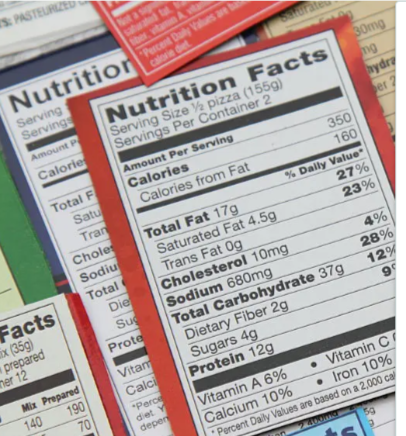

Diet Tips for Understanding Food Labels: Decoding nutrition information easily is vital for making informed dietary decisions. Grasping the nuances of food labels empowers you to tailor your diet to achieve your health goals. Many people find the plethora of information overwhelming, leading to confusion and potentially unhealthy choices. This comprehensive guide demystifies food labels, providing practical strategies to decode nutrition information easily. We’ll cover essential components like serving size, calories, nutrients, and the daily values. The structure will involve a deep dive into understanding each element of a nutrition label, offering practical applications and examples.
Understanding the Serving Size
Deciphering the Serving Information
The serving size is a crucial aspect of understanding food labels. It dictates how much of the food item constitutes a single serving. This information is essential because nutritional information on labels is provided per serving. If you consume more than a single serving, you must multiply the nutritional information accordingly. Many consumers often overlook this fundamental aspect, which can result in inaccurate dietary tracking. Understanding serving sizes accurately ensures you avoid overeating and maintain control over your calorie intake. Food labels typically indicate the serving size using both units (e.g., cups, grams) and visually suggestive images (e.g., a picture of a serving amount).
Calculating Calories for Multiple Servings
A key takeaway from understanding the serving size is the ability to calculate calories for multiple servings. Suppose you consume two servings of a particular food item. You must multiply the calorie count per serving indicated on the label by two to get the total calorie count for both servings. This precision in calculations is important, particularly for individuals managing their weight or following specific dietary plans.
For example, if a granola bar has 200 calories per serving, and you eat two, then the total calorie intake from both granola bars is 400 calories. This method is fundamental for accurate nutritional tracking.
Unveiling the Calorie Content
Importance of Calorie Awareness
The calorie count on a food label is a crucial metric for understanding the energy content of a particular food item. It’s essential to recognize that calories from different foods vary considerably. Excessive calorie intake can lead to weight gain, while insufficient calorie intake may lead to nutrient deficiencies. Understanding the calorie count allows you to manage your calorie intake effectively, helping you achieve your weight management goals. When considering a food’s overall contribution to your daily calorie allowance, the calorie count is an indispensable piece of the puzzle.
Comparing Calorie Counts Across Similar Foods
One of the benefits of understanding calorie counts is comparing different food options. For example, if you need to choose between two similar-looking food items, the calorie count per serving can help you decide. This comparison will guide you to choose the option with a lower calorie count and aid in your nutritional goals.
Let’s say you’re choosing between two brands of yogurt. Brand A has 150 calories per serving and brand B has 200 calories per serving. Based on the calorie count alone, you can choose the healthier option.
Deciphering the Nutrient Information
Understanding Macronutrients
Food labels typically provide information on the macronutrients present in a food item: proteins, carbohydrates, and fats. Understanding the balance of these macronutrients is essential for maintaining a healthy diet. These nutrients provide the body with energy and are crucial for various bodily functions. Protein supports muscle growth and repair, carbohydrates provide energy, and fats are essential for hormone production and cell function. For example, a high-protein breakfast can help you feel full and satisfied for a longer period.
Categorizing Nutrients by Daily Values
Many food labels indicate the percentage of daily values (DV) for various nutrients. This percentage reflects the proportion of the recommended daily intake of each nutrient that one serving of the product provides. Comparing these percentages with your individual dietary needs can help tailor your choices effectively. For instance, a food item that offers a substantial percentage of the daily value for fiber can contribute significantly to a healthy digestive system.
Recognizing Added Sugars
The Hidden Dangers of Added Sugars
While sugar is an essential part of our diet, added sugars can significantly impact our health. It’s important to be mindful of the amount of added sugar in processed foods, as excessive consumption can increase the risk of several health problems. Many processed foods contain unexpectedly high levels of added sugars, often disguised under various names. Understanding added sugars allows you to make healthier food choices by reducing your intake and promoting better overall health.
Identifying Added Sugars on Labels
Food labels typically list added sugars directly. However, it’s crucial to be vigilant, as added sugars are often listed under various names, like high-fructose corn syrup, sucrose, or dextrose. By reading the list of ingredients carefully, you can identify added sugars and their impact on your health. Understanding where added sugars hide is crucial to maintain a balanced diet and avoid unwanted health implications.
Applying Practical Dietary Strategies
Tailoring Diets to Specific Needs
Understanding food labels enables you to tailor your diet to specific health needs, dietary restrictions, or preferences. For example, individuals following a low-sodium diet need to carefully examine the sodium content per serving. Additionally, understanding food labels helps individuals with allergies or intolerances. If you have a nut allergy, for instance, you need to check the food label for any listed nut ingredients.
Incorporating Habits for Healthy Eating
By consistently applying practical strategies for decoding food labels, you can cultivate healthy eating habits over time. These strategies can be easily incorporated into your daily routines, aiding in the process of making informed food choices. The goal is to cultivate sustainable patterns of eating.
This section will include sample questions and answers, following the instructions provided in the prompt.
In conclusion, understanding food labels is crucial for making informed dietary choices. By decoding the nutrition information, you can tailor your diet to your specific needs and goals. Remember to consider your overall dietary pattern, portion sizes, and individual requirements when interpreting food labels. This guide provides a solid foundation for navigating food labels. Now, go forth and make healthier food choices! Visit our website for more dietary tips and resources.